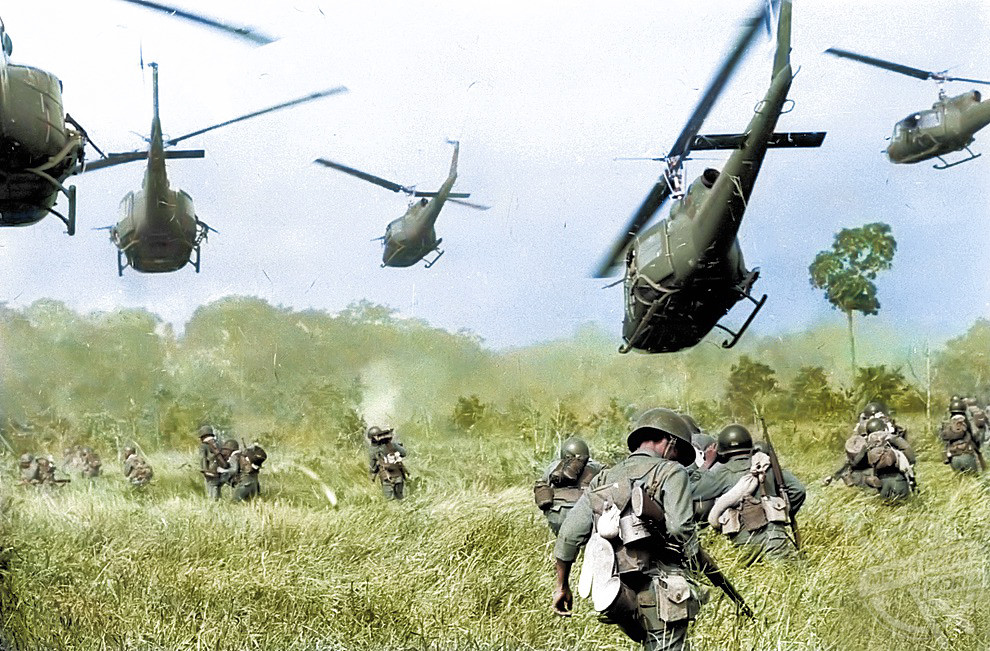By Mark McConville
THE GRIM realities of the Vietnam War have been revealed after a series of brutal conflict photographs were expertly colourised.
The incredible images show US riflemen charge toward Viet Cong positions while holding machine guns, wounded US Paratroopers being helped to a medical evacuation helicopter and US Army helicopters providing support for ground troops.

Other striking shots show women and children taking cover in a muddy canal from intense Viet Cong fire, US Army helicopters pouring machine-gun fire into a tree line and a US machine gunner peering from the brush of an overgrown rubber plantation during a half-hour fire fight.
The original black and white pictures were painstakingly colourised over a period of 10 hours by electrician Royston Leonard (55) from Cardiff, Wales.
“Vietnam is a war that went on for years before the world noticed it,” he said.

“America went to help and ended up drawn in to something it did not want, but could not walk away from once started.
“The soldiers all look so young; kids in uniform some would say. I see marines no different from World War Two doing their jobs the best they could.”
The Vietnam War was a conflict that occurred in Vietnam, Laos, and Cambodia from 1 November 1955 to the fall of Saigon on 30 April 1975.

It was the second of the Indochina Wars and was officially fought between North Vietnam and the government of South Vietnam.
The North Vietnamese army was supported by the Soviet Union, China and other communist allies and the South Vietnamese army was supported by the United States, South Korea, Australia, Thailand and other anti-communist allies.
The war is therefore considered a Cold War-era proxy war. The war is considered a humiliation for the United States.

The Viet Cong (also known as the National Liberation Front, or NLF), a South Vietnamese communist common front aided by the North, fought a guerrilla war against anti-communist forces in the region, while the People’s Army of Vietnam, also known as the North Vietnamese Army (NVA), engaged in more conventional warfare, at times committing large units to battle.

As the war continued, the military actions of the Viet Cong decreased as the role and engagement of the NVA grew. U.S. and South Vietnamese forces relied on air superiority and overwhelming firepower to conduct search and destroy operations, involving ground forces, artillery, and airstrikes. In the course of the war, the U.S. conducted a large-scale strategic bombing campaign against North Vietnam.
Direct U.S. military involvement ended on 15 August 1973. The capture of Saigon by the North Vietnamese Army in April 1975 marked the end of the war, and North and South Vietnam were reunified the following year.

Striking images like these are featured in British author Michael D. Carroll’s new book, Retrographic on the colourisation of historical images. It is available on Amazon now for £16.85.
For more information visit: https://www.amazon.co.uk/Retrographic-Historys-Exciting-Images-Transformed/dp/1908211504






